You see a claw machine in the store, filled with attractive prizes that not only you but also your friends and family would want. However, after giving it a try, you quickly realize that every time a prize is grabbed, it seems like it's going to be won, but the claw opens up on the top and the prize falls back to its original position. It's frustrating and disappointing.
Here are two proven and effective methods for easily grabbing prizes from claw machines that you can reference.
The Timing of Close the Claw
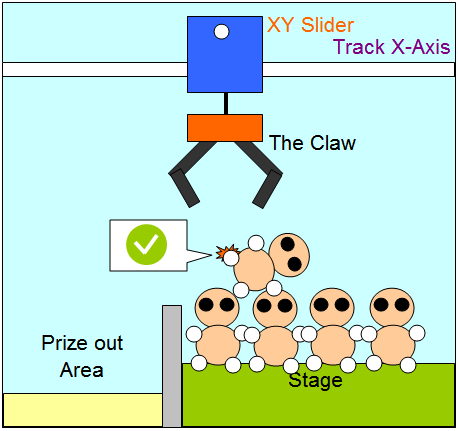
For a claw machine, after hit the button at 1st time, the claw will go down. Before the claw automatically close, you can hit the button again (the 2nd time) to make it close immediately. This rule can be used to catch some part of the prize.
When the claw setting of go down (reeling out) be set to high speed option, it can be a challenge to hit the button at the right timing.
If you hit the button to close the claw at the right timing, the claw can bite the best part of the prize and go up. In this case you will get the best advantage from this technique.
One thing to pay special attention to is if you observe the claw machine throwing the prize back when the claw is released. If you encounter this situation, there is a neat trick you can try:
When pressing the button to close the claw, you need to control it not to grip the prize too tightly, but rather to lightly grasp the prize so that it is easy to come off. The reason for doing this is that when the claw loosely grips the prize, it will rotate in the direction of gravity when it moves upward with the prize. Since the claw cannot hold onto the prize, it will fall down on its own instead of being thrown back into the claw machine !
Swing and Cast The Inclined Claw
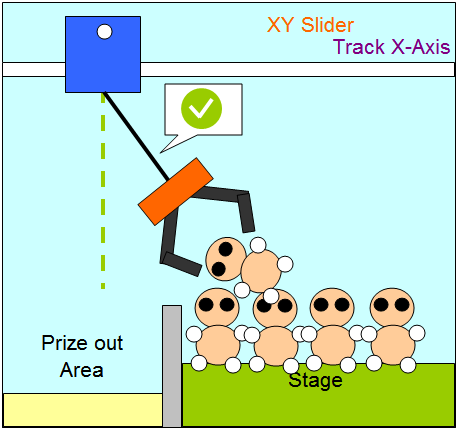
When operate the joystick to move the slider, you might notice that the claw will swing back and forth. Most people will wait until the claw stop moving then hit the button to cast the claw. Since it is hard to predict the final position if the claw is swinging.
But, if you can master the skill of predict the position of a swinging claw, then you can get the most advantage from this technique.
Most of the time, it is not easy to pull the prize toward the Prize Out Area. If you can swing the claw and make it grab the target prize at a large angle compare to its original 0 angle (forms a Inclined Claw), then when the claw goes up, it may even bring the prize cross over the fence and out.
If you have been practice the right timing to hit the button, the claw can catch some small part of a prize at the edge side. Since the edge side is away from the mass center, so when the claw goes up, the mass center will be pulled toward the catch point. Check the diagram below.
Before Catch The Prize
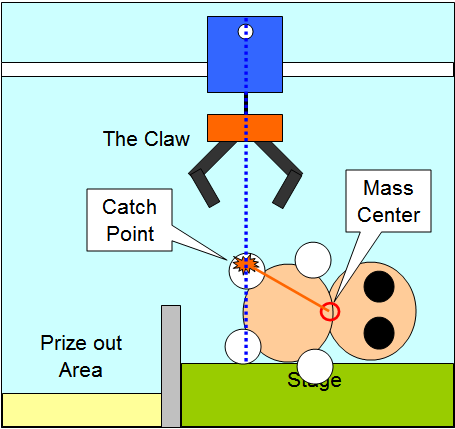
Try to target a catch point that close to the Prize Out Area and away from the mass center of the prize.
After Catch The Prize

As the claw goes up, due to the gravity force will pull down the mass center of the prize, while the catch point will be pulled up. Ideally, this will make the mass center of the prize more close to the Prize Out Area.
Then the chance to win the prize will be increased.
If you really wanna beat the claw machine, then swing, swing, and SWING! The swing skill is a MUST equipped weapon. The claw has to be swing and forms an inclined angle to catch the prize. If success, this can greatly pull the prize toward to the out area.
If you don't swing the claw, the final location of the claw is relative easy to predict. However, if the claw is swinging, the pointing direction of the claw is always changing, and it is hard to predict the final location at this moment. People will tend to wait until the claw stop swinging then cast the claw. It is not easy to cast the swing claw at the right timing, such that when it reach to the down side it can also swing to the location of the target prize.
Fortunately, the swing techniques has been well developed and I will show you on next.
The Claw vs The Pendulum
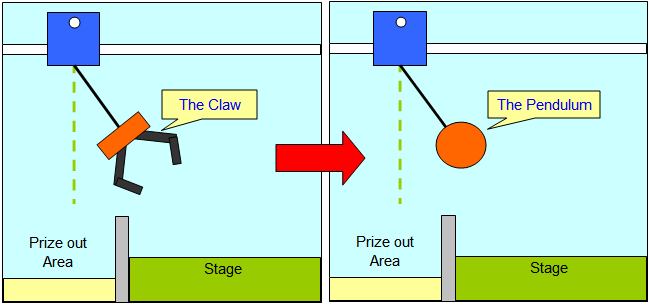
At first, we should know the good way to analyze the behavior of the claw. If the behavior or the swing frequency is predictable, then it will be easier to learn this technique.
If you compare a pendulum to the claw, don't you think they are quite the same?
Well, they are very similar, at least close enough so that you can put them together to compare. Except a pendulum does not bite.
If they are the same thing, then we can use a physics pendulum system to analylize the swing frequency of the claw!
The Physics Model of The Pendulum
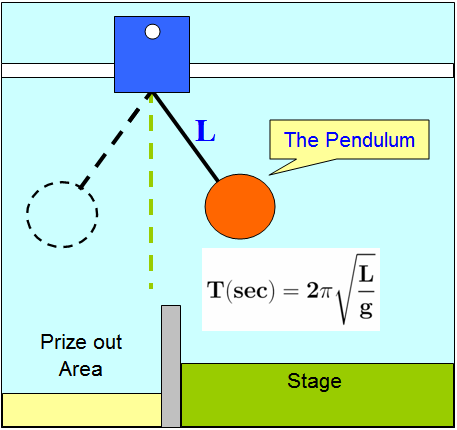
T is the swing period of a pendulum. If T = 1 sec, means it takes 1 sec to go and back to the original place. If T = 0.5 sec, then it only takes 0.5 sec to do the same thing, which also implies the swing frequency F is 2 times a sec. If T = 0.1 sec, then the Freq will be F = 10 (Hz).
As the formula states, the swing period T, or swing frequency, determined by Pi, L, and g. Since Pi and g are constants, so the only one factor is L. From this physics model, you can tell if the length L is larger, then it takes longer to swing 1 time.
For a claw, the good news is, before you cast the claw, the L is also a constant. So the swing frequency is also a constant and that makes it predictable!
The Swing Frequency of The Claw
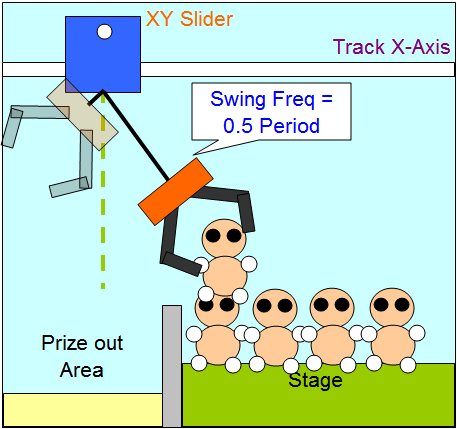
When you swing the claw to the most left side and hit the cast button at that moment, then the claw will reeling out and swing to the right direction. In this case, if the claw reach the most right side and also down to the height of the target prize, then the frequency of the claw is 0.5 period.
If the claw takes more time such that it swings from left to the right and back to the most left again, then the frequency is 1.0 period. In real case, the swing frequency depends on the the length of the string, the stage height, and reeling out speed.
The Learning Targets of Swing The Claw
You will get the much higher chance to win the prize if be able to done this well.
In some cases, the claw machine sets a weak gripper force of the claw, it can not even pick up the prize. Or, an angle plate be installed on the claw, such that after a prize be pulled, it will be through away from the prize out area. In these cases, it will be much difficult to use the claw to grip the prize out directly.
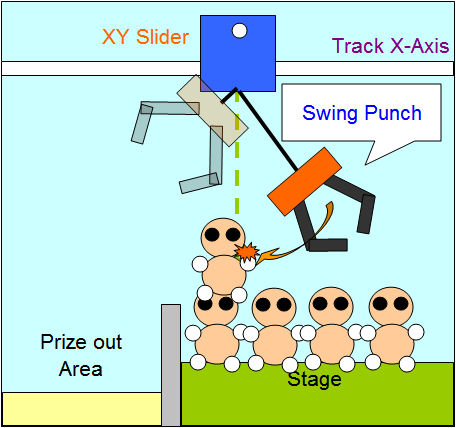
For those cases, the claw masters will cast a technique, Swing Punch. Swing Punch does not bite the prize at all. Instead, it PUNCHes the prize out !
For cast this technique, you need to swing the claw first. Then, at a right timing cast the claw and wait until it reeling out a right distance without hitting any object and hit button to close the claw. At this moment, the claw will stop reeling out/in but still keep moving freely. If a prize is on its way of moving direction, the prize will be punched out.
In real applications, the claw masters may dodge the prize first then punch it from the back. Or make the claw do a circular motion to avoid the other objects and then punch the target. After did lots of practice about swing claw, you should be able to perform this technique.
Play Claw Machine Simation Game
Please also visit our claw machine simulation website to practice the techniques you just learned: Claw Man https://iclawman.com/.